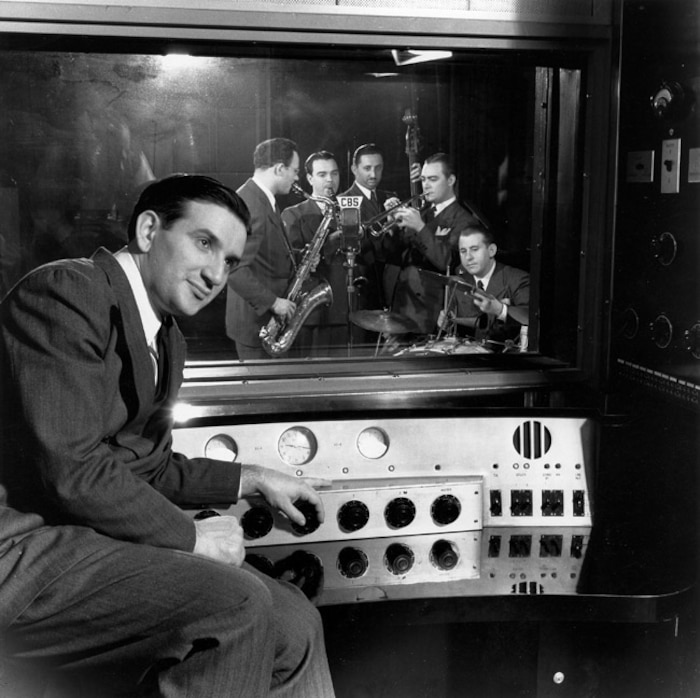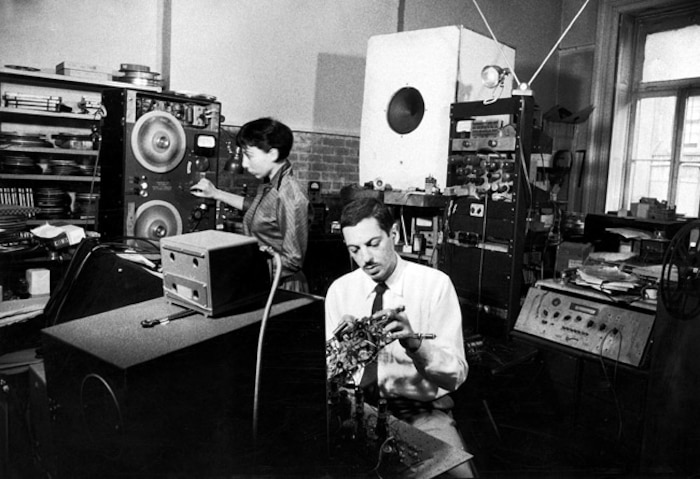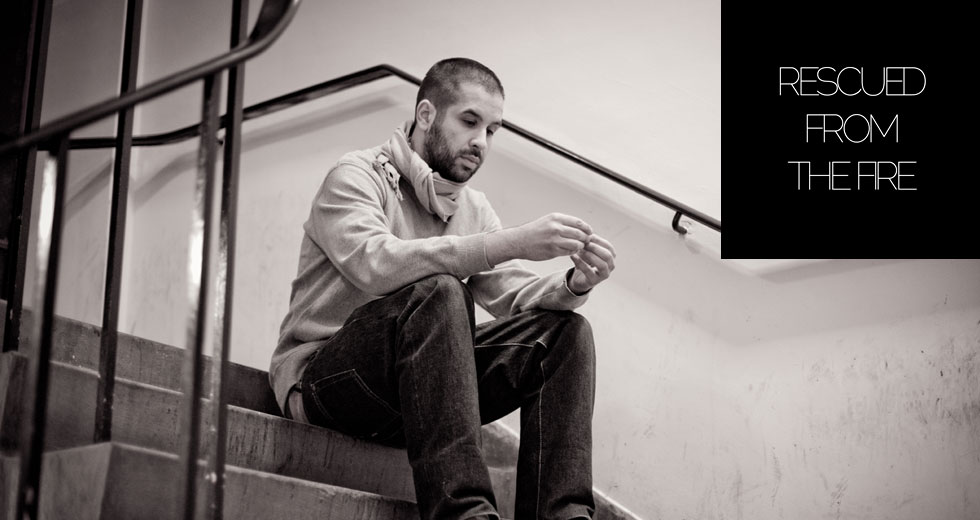Secret Circuits: New York’s Early Electronic Music Mavericks
In the first half of the 20th century, electronic music as we know it was in its embryonic stages. The synthesizer didn’t exist, but there were various electrical contraptions with fantastical names: Thaddeus Cahill’s Telharmonium in the early 1900s; the theremin, originally called the aetherophone, invented in 1919 by Leon Theremin; the Spharophon; the ondes martenot; the Trautonium. Yet these devices, while fascinating, were of limited usefulness.
The magnetic tape recorder, invented in Germany in the 1930s, ushered in a dramatic musical revolution. By the time tape machines started becoming more widespread in the late 1940s, artists and musicians started to realize that these machines didn’t just record – they were powerful creative tools for making new sounds. With magnetic tape, it was suddenly possible to record and manipulate sounds in ways that were unimaginable before.
Instead of staying in the avant-garde, these artists helped make electronic music part of the fabric of the world.
But the process of making electronic music in the 1940s and 1950s – using reel-to-reel tape recorders, bulky analog test equipment and other gear – was still beyond the reach of the average person. It makes sense that electronic music’s history is often tied to famous institutions and studios, which had the space and the funding to support these sonic experiments. By the mid-1950s, there were several electronic music studios: GRM in Paris, the birthplace of musique concrète; NHK in Tokyo; and WDR in Cologne, for starters.
But an equally strange and interesting story was taking root in New York City in the 1950s, in apartments and makeshift studios. Iconolastic inventors built their own circuits, invented their own instruments and pushed the limits of tape machines, outside of the bounds of institutions and famous academic studios like New York’s Columbia-Princeton Electronic Music Center. Four of these New York composers in particular – Raymond Scott, Tod Dockstader and Louis and Bebe Barron – were instrumental to the growth of electronic music as we know it.
Perhaps most importantly, these inventors and composers helped get electronic music into everyday life – injecting their prescient sounds into cartoons, popular movies, radio jingles and more. Instead of staying in the avant-garde, they helped make electronic music part of the fabric of the world. Many of us heard electronic music for the first time via the far-out sound effects of Looney Tunes cartoons, crafted by Scott, Dockstader and others in the 1960s. The Barrons infiltrated Hollywood, making the first fully electronic score for a movie: the hugely influential 1956 sci-fi classic Forbidden Planet. Instead of crafting their sounds within the safe cocoon of a well-funded institutional studio, they battled the whims of the marketplace – supporting themselves with their music, and often struggling to pay the rent.

Raymond Scott was born in Brooklyn, and learned a lot of what he knew about electronics from his time at Brooklyn Technical High School. Beginning in the late 1940s, Scott designed incredible machines which helped inspire the synthesizer revolution. Scott’s most famous creation was the Electronium, a gigantic “instantaneous composition-performance machine.” The analog electronic instrument was massive and impressively futuristic, like the console from a spaceship. The machine was meant to automatically generate pieces of music, much like a computer algorithm. Motown’s Berry Gordy commissioned an Electronium, the only one that still exists today (it is now in the hands of Mark Mothersbaugh of Devo).
You can also credit Scott for inventing the first sequencer. “When I first worked for him in the 1950s, he had built a sequencer with relays, motors, steppers and electronic circuits,” marveled Robert Moog, the late, legendary synthesizer inventor, who was deeply inspired by Scott. “I had never seen anything like it.”
For Scott, music wasn’t really about the thrill of live improvisation; he dreamed of a future where the listener could connect directly with the composer’s vision.
Scott was also a successful composer; he made it big in the traditional way in the 1930s and 1940s with a pop career, which helped finance his later pioneering research in electronics. He had a flair for writing melodies you could snap your fingers to, and was in high demand for writing music for TV and radio jingles, cartoons and movies. Scott’s signature electronic sounds were created using his unique inventions, but his music never got too esoteric; he managed to retain popular appeal. You could foresee his transition to electronics early on; in his Raymond Scott Quintette recordings in the 1930s and his big-band recordings in the 1940s, it already sounded like he was waiting for the machines to take over. The tunes were catchy but rigid; he directed his band to play the melodies with exacting precision, as if he already had the concept for the sequencer in his head.
For Scott, music wasn’t really about the thrill of live improvisation; he dreamed of a future where the listener could connect directly with the composer’s vision. “Perhaps within the next hundred years, science will perfect a process of thought transference from composer to listener,” he said in 1949. “The composer will sit alone on the concert stage and merely think his idealized conception of his music. Instead of recordings of actual music sound, recordings will carry the brainwaves of the composer directly to the mind of the listener.”
Scott eventually built a deluxe electronic music studio and workshop in his grand, sprawling house on Long Island; a 1959 article in Popular Mechanics showcased Scott’s massive, futuristic setup. “The house where composer Raymond Scott, singer Dorothy Collins and their two children live in Manhasset, NY, is not a home in any ordinary sense,” Popular Mechanics proclaimed. “It is a 32-room musical labyrinth, and a testament to Scott’s electronic genius.”

Tod Dockstader was less commercially successful, and more sonically out-there. Like Scott, Dockstader also worked on sound effects for animated shows like Tom and Jerry, but Dockstader’s work tended to be less accessible and more experimental. Parts of Eight Electronic Pieces, Dockstader’s first record, were later used in the Federico Fellini film Satyricon.
Dockstader, who came from an art background, taught himself about electronic music by messing with military surplus gear and ham radios. His first edits were made in high school with a wire recorder, a primitive device capable of making lo-fi recordings on steel wire; he would make edits by holding the wire up to his face, making the splice with a burning cigarette held between his teeth.
In the late 1950s and early ’60s, Dockstader was employed by Gotham Recording Studios in Manhattan. He worked on his own music in the studio at night, which eventually led to several incredible electronic music albums, including Water Music (1963) and Quatermass (1964). “I would talk to these Ampex [tape machines], they were like my friends,” he told me last year when I spoke with him for Wired. “I was always working at night, deep night.”
Dockstader searched long and hard for intriguing noises, making beautifully crafted musique concrète on a shoestring budget. “I was always scavenging for things that might work, that might do something,” he recalled. “It didn’t matter what it was – if it sounded interesting, or I could make it interesting, I’d go for it.” For Water Music, he recorded sounds of water dripping from a kitchen sink, toilet and open manhole. Shortwave radio especially captivated Dockstader from a young age with its cryptic transmissions broadcasting secrets from afar; the medium also became the inspiration for Dockstader’s late masterpiece, Aerial, released in 2005.
The story of Louis and Bebe Barron is perhaps the strangest of all, because their life story sounds like something out of a science-fiction novel.
The story of Louis and Bebe Barron is perhaps the strangest of all, because their life story sounds like something out of a science-fiction novel. The Barrons were a husband-and-wife team who made electronic music in their apartment using an array of homemade circuits; their entire studio in the 1950s was crammed into one room of a relatively small apartment on West 8th Street in Greenwich Village.
The Barrons were most famous for creating the prescient soundtrack for the science-fiction classic Forbidden Planet, the first fully electronic film score. But the Barrons were relative outsiders; they weren’t accepted by Hollywood. Their pioneering sounds were labeled “electronic tonalities,” not music, to avoid a potential lawsuit with the Musician’s Union. “What the Musician’s Union will make of this I don’t know – but a new Hollywood movie has a score ‘played’ by no human agency,” wrote the Los Angeles Times that year. It’s hard to contemplate in 2013 how absolutely alien it must have been to make electronic music in 1956.

The Forbidden Planet score broke new ground. There had been many sci-fi movies in the 1950s that used the theremin to supply otherworldly noises, including Rocketship X-M (1950) and The Day the Earth Stood Still (1951), and there were many orchestral scores punctuated with electronic sound effects. But in Forbidden Planet, there was no theremin and no orchestra – all the sounds came from the Barrons’ homemade circuitry and tape machines. There was no difference at all between the sound effects and the music. Everything – absolutely everything – was electronic.
The story of the Barrons’ strange music began with a wedding gift in 1948. A German friend gave them a Magnetophon, one of the first tape machines imported into the United States. The Barrons were fascinated with the expensive wedding gift. The tape stock was expensive too but, as the legend goes, Louis Barron had a relative that worked at 3M who could get tape stock for free. Soon they were building a makeshift home studio.
The front room of their apartment is filled with equipment. It is a jungle of electronic instruments, knobs, wires, as complex as the control panel of an airplane.
“The front room of their apartment on 8th Street is completely filled with equipment,” the author Anaïs Nin, a good friend of the Barrons, wrote in her diaries. “It is a jungle of electronic instruments, knobs, wires, as complex as the control panel of an airplane. It is separated from the living room by soundproof glass.”
In New York in the early 1950s, the Barrons quickly fell in with the avant-garde scene, working with John Cage on building up the samples for the classic 1952 work “Williams Mix.” The Barrons then created the scores for two short films directed by Ian Hugo, Nin’s first husband – Bells of Atlantis (1952) and Jazz of Lights (1954), a surreal and stunning exploration of New York City which featured Nin walking the streets with Moondog, the blind, itinerant musician who was sometimes called the Viking of Sixth Avenue. Many famous artists, musicians and writers spent time at the Barrons’ apartment in the West Village – Aldous Huxley, Nin and Maya Deren among them – and the Barrons’ lives tell a story not only of the history of electronic music, but of bohemian downtown New York in the 1950s.

Inspired by cybernetics, the study of systems, the Barrons thought of their DIY circuits as living organisms, recording the sounds of the electronics as they came alive and surged inexorably to their death. “In applying this science to our music, we analyze a film in terms of its thematic and emotional content, as any film composer would,” the Barrons explained to Nin, as recorded in her diary. “Then, instead of writing musical notes to express our feelings, we design special electronic circuits. We feed instructions to these circuits. The instructions inform them how they should react and interact to the sensations they receive from other circuits, and how they should react to their own behavior, which they sample through feedback loops.”
They showed that you didn’t need access to a famous institution to make electronic music; you could make it yourself, in your own apartment.
The Barrons’ curious technique – giving up to the mercurial whims of the circuits, letting them dictate the way – was in stark contrast to the Paris musique concrète school and the Cologne school of composers like Karlheinz Stockhausen, who favored total control over their compositions. The Barrons’ philosophy echoes what John Cage’s longtime collaborator David Tudor would say later about his own electronic music. “I don’t like to tell the machines what to do,” Tudor said in a 1984 interview. “It’s when they do something that I don’t know about, and I can help it along, then all of a sudden I know the piece is mine.”
In their own unique ways, Raymond Scott, Tod Dockstader and Louis and Bebe Barron all helped to push electronic music into the mainstream. Instead of staying within the studio, these maverick New York composers helped demonstrate that inventive, boundary-pushing electronic music would soon be embedded in our lives. They showed that you didn’t need access to a famous institution to make electronic music; you could make it yourself, in your own apartment. These pioneering do-it-yourselfers in the 1950s helped predict the future – an era where anyone can run a home studio on a laptop, where anyone can make sounds we never thought possible.
A version of this article appeared in The Daily Note, a free daily newspaper distributed in New York during the 2013 Red Bull Music Academy.
Illustrations: Kustaa Saksi

